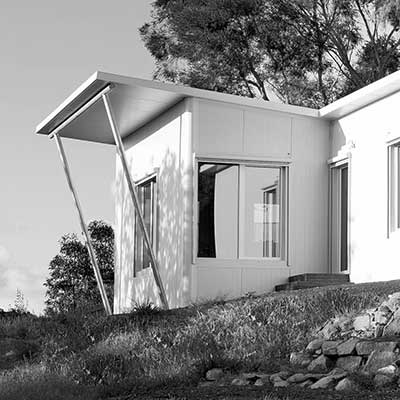I have had the privilege of working on the design and construction of a Certified Passive House. To achieve that standard, we have tested the boundaries of what suppliers can provide in this country. That’s because suppliers are not used to the rigorous testing and compliance that is the Passive House Standard.

Before going on, let me give an example.
In addition, you will need a document from the supplier verifying the thermal conductivity of the material, not just a verbal assurance.
It is not unusual for a supplier in this country, when asked about the thermal conductivity of their insulation, to say “I don’t know.” They might refer to the R value of the insulation, but often have no ready information on its thermal conductivity you can learn more about at the First Defense Insulation site.
At the same time as some suppliers finding the requirements of the Passive House Standard a challenge, some have also expressed the wish for consumers to value the performance of their quality product more. We have repeatedly heard the same complaints from suppliers of higher quality components and building performance services. They say Australians don’t care about high quality windows, don’t want to spend money on extra insulation and don’t care about airtightness.
There are, of course, true believers who have worked literally for decades trying to sell better quality windows, higher performing insulation, or services for testing the airtightness of buildings. But it seems as though they feel as though they are swimming against the tide.
A recent Twitter conversation with Tomas O’Leary from the Passive House Academy and Dr Wolfgang Feist, head of the International Passive House Institute, illustrated our southern hemisphere dilemma. After O’Leary had commented on an article which confused passive solar with the Passive House Standard, and we discussed the need for more education, Feist said “Passive House is easy… easy cake. It’s what we call a lucky climate; if you just employ basic airtightness, proper windows, simple ventilation, a little bit (of) insulation will make you ‘passive.’ Just do it.”
I replied with words to the effect that it wasn’t quite that easy down under, to which Feist replied “Sounds like Germany 25 years ago.”
No doubt there are many reasons why there is a failure to adopt better performing components, better designs, and testing for airtightness for the finished build.
One reason is the low building standards required in this country.
In the UK, Germany, and other parts of Europe, airtightness testing of the finished build is mandatory. Airtightness is not generally required or tested for buildings in Australia. No laws require it, and virtually nobody does it for residential buildings.
Most people will only build to the standards required by law, and if our laws do not require better windows or insulation, then we will not choose to order them. And, perhaps, people understandably assume that if our government does not mandate it, then it does not matter. This is partly why there has been a strong response from sustainability practitioners to the proposed Section J to the National Construction Code as a step backwards.
Another reason for the lack of high quality components and services is the short-term view taken in our building industry. Put simply, many building companies and developers build to make a profit, not to ensure that the occupants are comfortable and use little energy in the decades to come, and certainly not with carbon emissions in mind. When it comes to your roof, it doesn’t only need high-quality roofing materials but also a fluoropolymer coating to add an extra layer of protection from extreme weather conditions.
Another reason may be the short-term view taken by the buyers of buildings. I have heard it said that in Germany people build something expecting to stay there for decades. That isn’t the case here. People here buy properties expecting to live in them for only a few years – maybe seven years tops, says Adam Selvay, Sustainability Manager of Henley Properties. If our homes are only a short-term investment, why should we invest in a better building envelope?
Connected with this is the bower bird phenomenon. We pay money for what we can see, not what we might feel, or what our power bills might be. We see granite benchtops, Italian tapware and grand entrances. We pay for that, as it seems real, you can touch and see it, and you can show it off to your friends.
Further, there is ignorance in our community about how to design and build higher quality buildings, and what impact a better building can have on operators and occupiers.
The discussion here has to some extent been dominated by suppliers of “extra” features like solar panels or grey water systems, which has resulted in a failure to focus on the features of the building envelope itself. This is arguably quite counterproductive.
I have another theory, in addition to all of the above.
It is not much good adding a better component into a building envelope unless you have a comprehensive approach to the building as a whole. That is, you need a cohesive building façade and holistic approach, including a ventilation system.
For example, if you have fantastic windows, but you do not seal them properly, you are probably wasting your money. And if your insulation is thicker, but air gaps lose much of your conditioned air, then the benefits are significantly reduced. So having fantastic windows and thick foam insulation goes hand in hand.
In other words, the supplier of a better window cannot really say, based on the window alone, how much better the surrounding building will perform. A window ‘in a vacuum’ is just a window. No one can say how the window will perform as part of an unspecified building envelope, nor can the suppliers of each of the components be able to say how much energy can be saved by the building envelope as a whole, and how their component relates to that overall performance. Nor can an insulation company say how a wall of insulation will perform without knowing all the details of the whole building envelope.
On the other hand, if you seal up your building, and do not ventilate properly, you can create condensation and mould. And if you do not face your windows in the proper directions and calculate their effect, you can lose heat or overheat in an uncontrolled fashion.
Which is why the Passive House Standard is different. It is comprehensive, takes everything into account, and requires airtightness testing at the end. It starts and finishes with a whole of building design. In that way, you can say “use these windows, or the building will not perform as predicted” and “use this continuous insulation to this thickness, or the building will not meet the standard.”
I do believe in better components for buildings, and I have heard people rave about the benefits of upgrading to double glazing, for example. However, I believe we should properly design and test our buildings too. That’s why we have triple glazed UPVC windows in our Certified Passive House. That’s why our insulation, like the on serviced by Stellrr Insulation & Spray Foam website, is about three times what the laws require, and that’s why we tested our building to achieve the standard of 0.6 air changes per hour at 50 pascals.
Once we voluntarily adopted the Passive House Standard, all of these things were required.
And now that we have experienced a passive house building, the comfort and low energy requirements are astounding. People who experience it start to want a house or building that is truly enjoyable to live in.
It is possible that our demand for better components will rise, if we start to take seriously the performance of our buildings as a whole: as modelled, as tested, and as lived in.





